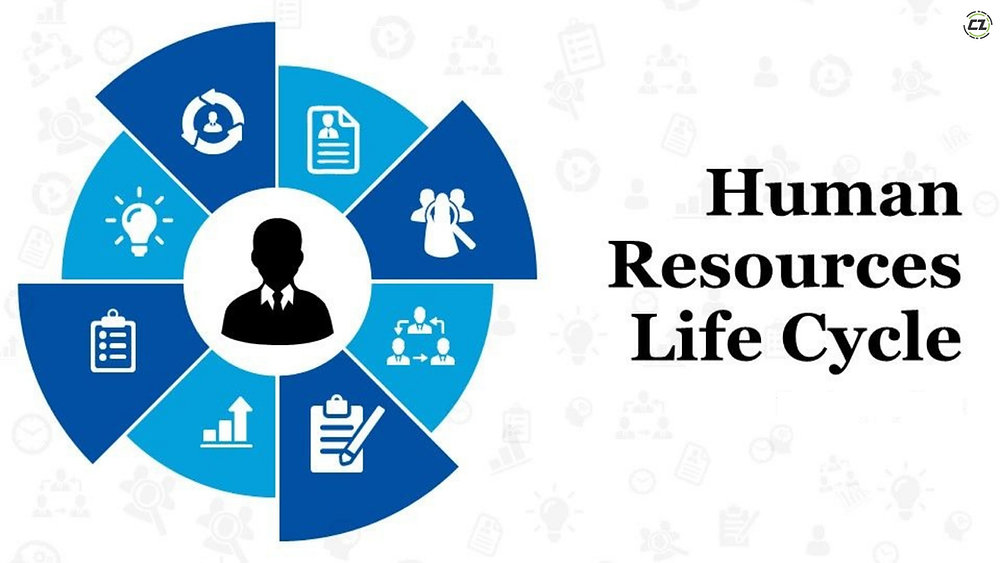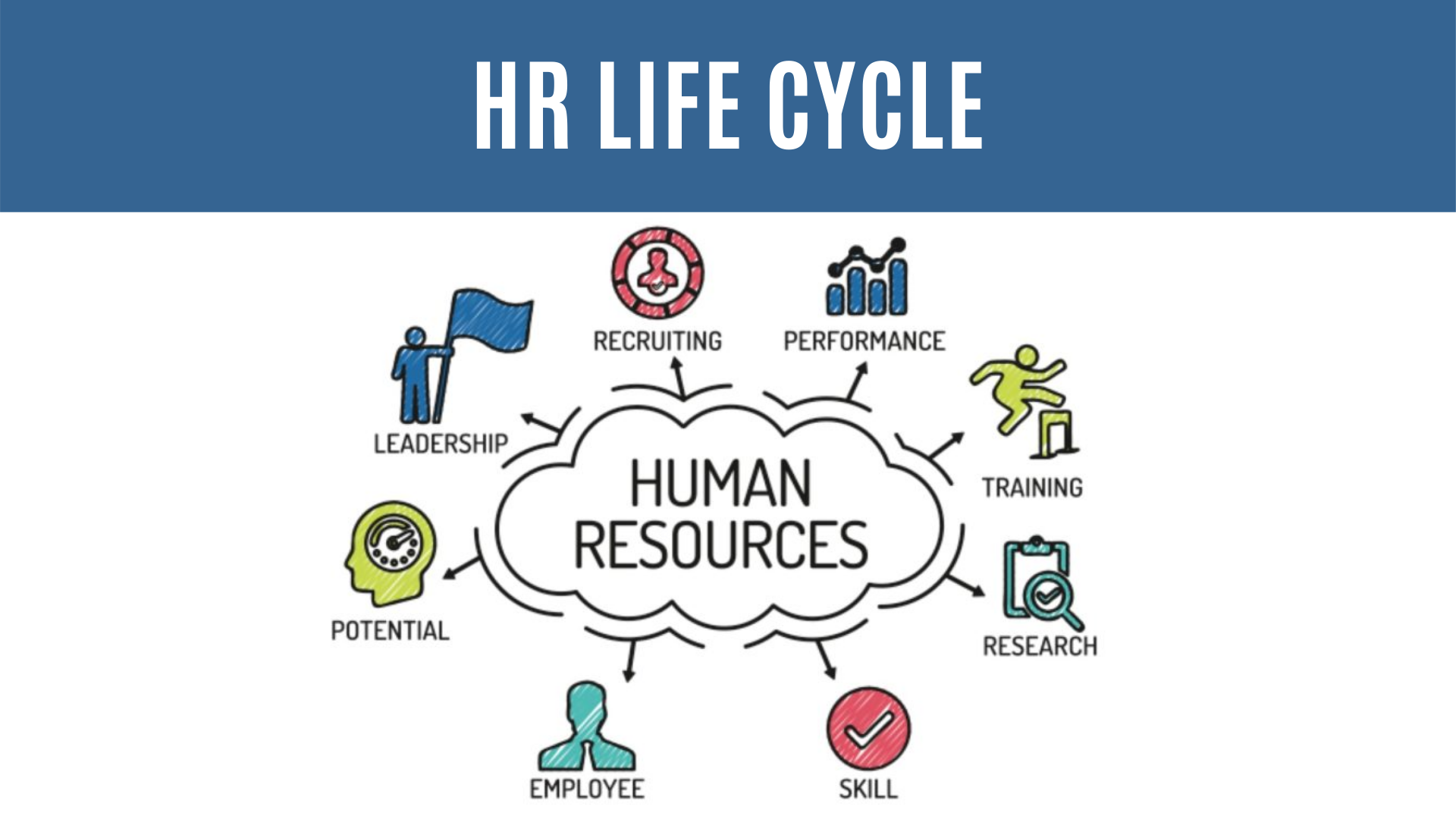The HR Lifecycle is one of the most essential concepts in Human Resource Management. It represents the journey of an employee within an organization—from the time they are recruited, to their development, retention, and eventual exit.
For HR professionals, understanding and managing each stage of this lifecycle is crucial to building a motivated workforce, reducing turnover, and driving long-term business success.
In this guide, we’ll walk through each stage of the HR lifecycle—from recruitment to retention and beyond.
What is the HR Lifecycle?
The HR Lifecycle is the series of stages that an employee goes through during their time in an organization. It begins with recruitment, moves through onboarding, development, and performance management, and continues to retention and eventual separation.
This lifecycle is not just about hiring employees—it’s about creating a positive employee experience throughout their journey.
Key Stages of the HR Lifecycle
Let’s explore each stage in detail:
1. Recruitment & Selection
The journey starts with recruitment and selection focus on attracting and choosing the right people for your organization. This is where HR identifies talent needs, posts job openings, and attracts suitable candidates. At this stage, the focus is on attracting candidates who not only meet the job requirements but also fit well with the organization’s culture and values.
Key activities include:
-
Writing job descriptions and role requirements
-
Sourcing candidates (job portals, referrals, social media, etc.)
-
Screening resumes and shortlisting
-
Conducting interviews and assessments
-
Selecting the right candidate
Example
Aisha applies through the company’s career page. HR shortlists her resume, conducts online assessments, and schedules interviews. After multiple rounds, she receives the job offer.
2. Onboarding & induction
After recruitment, the employee enters the onboarding stage. This is critical to help them adjust to their new workplace. Similarly, employee induction focuses on helping new hires get familiar with the company and providing them with the tools and knowledge to succeed in their role.
Key activities include:
-
Sharing company policies, values, and culture
-
Introducing employees to teams and managers
-
Providing training on tools and systems
-
Assigning mentors or buddies for smoother integration
Example
On her first day, HR provides Aisha with an employee handbook, company laptop, and login credentials. She attends orientation sessions, meets her manager, and is assigned a mentor to guide her through her initial weeks.
3. Learning & Development (L&D)
Once settled, employees must grow. HR provides learning opportunities to improve performance and prepare them for future roles, and future opportunities, or adapt to evolving skill requirements. This includes upskilling, reskilling and role-specific learning.
Key activities include:
-
Skill development programs
-
Leadership and management training
-
Online learning platforms
-
Mentorship and coaching
Example
Within the first 3 months, Aisha takes part in technical training sessions and soft skills workshops. The company provides access to an online Learning Management System (LMS) where she can learn at her own pace.
4. Performance Management
Performance Management is the process of monitoring, evaluating, and improving employee performance to ensure it aligns with organizational goals. It helps both employees and managers stay on track and continuously improve.
Key activities include:
-
Setting clear performance goals (KPIs, OKRs)
-
Conducting regular performance reviews
-
Giving constructive feedback
-
Rewarding high performance
-
Identifying gaps for improvement
Example
Aisha’s manager sets clear OKRs (Objectives & Key Results) for her role. She receives regular feedback during quarterly reviews. Her good performance earns her a recognition award in a team meeting.
5. Employee Engagement & Retention
Employee Engagement refers to how motivated, committed, and emotionally connected employees feel toward their work and organization. Engaged employees are more productive, innovative, and loyal.
Retention, on the other hand, focuses on keeping talented employees within the company for the long term. High turnover can be costly, so HR leaders must design strategies that make employees feel valued and supported.
Key activities include:
-
Fair compensation and benefits
-
Recognition and rewards programs
-
Employee wellness and work-life balance initiatives
-
Career advancement opportunities
-
Building a positive organizational culture
Example
To keep her motivated, HR introduces Aisha to employee wellness programs, hackathons, and recognition platforms. She also receives opportunities for career growth, like working on cross-functional projects.
6. Succession Planning & Career Development
Succession Planning is the process of identifying and preparing high-potential employees to take on key roles in the future. It ensures business continuity by reducing risks when leaders or critical employees leave.
Career Development, on the other hand, focuses on helping employees grow within the organization by providing learning opportunities, promotions, and skill-building programs. Together, these strategies create a motivated workforce ready for long-term success.
Key activities include:
-
Identifying high-potential employees
-
Providing career roadmaps
-
Preparing employees for leadership roles
-
Promoting internal mobility
Example
After 2 years, Aisha shows strong leadership qualities. HR includes her in a leadership development program to prepare her for a future team lead role.
7. Separation & Offboarding
Every employee eventually leaves—whether through resignation, retirement, or termination. A smooth offboarding process ensures professionalism and leaves the door open for potential rehires (boomerang employees).
Key activities include:
-
Conducting exit interviews
-
Collecting feedback on workplace experience
-
Managing knowledge transfer
-
Final settlements and documentation
Example
Eventually, if Aisha decides to move on, HR will conduct an exit interview, process her final settlement, and ensure a smooth handover. She may even join the company’s alumni network, keeping doors open for future collaboration.
Why Recruitment to Retention Matters in HR
The process from recruitment to retention is the heart of HR management. Here’s why it matters:
-
Strong talent pipeline → Ensures the right people join the company.
-
Better onboarding → Faster integration and higher engagement.
-
Continuous learning → Increases productivity and innovation.
-
Effective performance management → Aligns employees with business goals.
-
Retention strategies → Reduce hiring costs and build loyalty.
-
Positive exit process → Strengthens employer branding.
Conclusion
The HR Lifecycle is the backbone of Human Resource Management. From recruitment to retention, every stage plays a vital role in building a positive employee experience and driving business success.
When HR professionals manage recruitment, onboarding, development, performance, and retention effectively, they don’t just fill positions—they create a motivated, skilled, and loyal workforce.
Organizations that prioritize the HR lifecycle enjoy higher employee satisfaction, reduced turnover, and stronger employer branding. In today’s competitive business world, a well-managed HR lifecycle is not just an HR responsibility—it’s a business necessity.
FAQs
1. What are the 7 stages of the HR Lifecycle?
The main stages are: Recruitment, Onboarding, Learning & Development, Performance Management, Employee Engagement, Retention, and Separation/Exit.
2. Why is the HR Lifecycle important?
The HR lifecycle ensures a structured approach to managing employees, improving engagement, boosting productivity, reducing turnover, and aligning HR strategies with business goals.
3. What is the difference between recruitment and retention?
-
Recruitment is the process of attracting and hiring talent.
-
Retention focuses on keeping employees satisfied and engaged so they stay with the organization long-term.
4. How can HR improve employee retention?
HR can improve retention by offering:
-
Competitive pay and benefits
-
Career growth opportunities
-
Recognition and rewards
-
Work-life balance and wellness programs
-
Positive workplace culture
5. What happens in the separation stage of the HR lifecycle?
The separation stage includes offboarding, exit interviews, knowledge transfer, and completing final settlements. It ensures a professional closure and provides insights to improve retention in the future.


